Most customers are shocked to learn that there is more than one type of St. Augustine Grass! Not only is there more then one but in fact there are several. For some people a lawn is just a plot of grass that is a hassle to care for, but for others it can be a means of reducing stress, and a lovely environment for them and their family. In this post we will discuss the 5 most common types of St. Augustine grass as well as the stuff you shouldn’t use.
1. Floratam
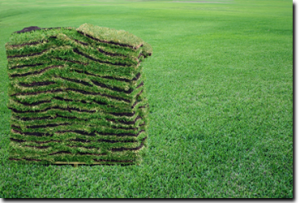
The most common St. Augustine grass used by Florida homeowners is Flortam. This grass is fairly easy to care for, the limited spectrum of issues allow us to focus on only a few main issues that could be the cause of any damage. This is the preferred type of turfgrass in SWFL.
Floratam St. Augustine grass was released by the Florida and Texas Agricultural Experiment Stations in 1972 as a SAD virus and chinch bug resistant selection. It has since been observed to be the most drought tolerant St. Augustine & brown patch tolerant. Floratam is a vigorous, coarse textured St. Augustine grass variety.
Floratam St. Augustine grass was found to be better than Common for the following reasons:
- It has resistance to SAD virus.
2. It has resistance to chinch bugs. (sort-of)
3. It is vigorous, establishes a ground cover rapidly, and has superior color.
4. It is superior to Texas common St. Augustine grass in its tolerance to downy mildew, gray leaf spot diseases and brown patch fungus.
2. Sapphire
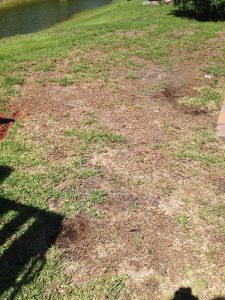
You do not want to have Sapphire grass as your lawn. Sod farms loves pushing this because incentives matter; if you buy this grass, put it down, it succumbs to fungus, then you re-sod. Rinse and repeat cycle = lots of $$$ for the sod farms.
They bill this grass type as a premium St. Augustine variety that features a blue-green color and extremely fast lateral growth. This characteristic allows Sapphire St. Augustine to recover from damage quicker than other St. Augustine grasses. Sapphire St. Augustine is tolerant of drought and heat and thrives in sub-tropical climates.
But the truth is that beside all of the great tolerances and quick to recover sales pitch – it is useless if the grass is so susceptible to fungus that you have to re-sod areas of your lawn on a yearly basis.
This type of grass and Palmetto (covered at #4) are big money makers and the sod farms will sales pitch them to your unsuspecting lawn man all day.
Terra Garden Solutions will not service this type of sod.
3. Seville (Shady Grass)
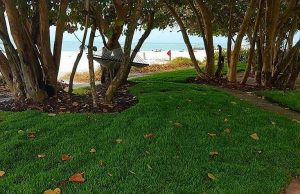
Seville is considered a dwarf cultivar that is a much finer textured grass than Floratam. Seville is blue-green in color with excellent color retention. Seville tolerates salt, shade, and drought well.
Its leaf blade gives it a unique appearance preferred by many homeowners. It is considered one of the most shade tolerant turf grass among the St Augustine grasses. It can tolerate wide pH ranges, from the acidic soils often found inland to the high pH soils of the coastal areas. Because Seville can tolerate and persist in areas within a lawn with only 6 to 7 hours of sunlight, it is considered a favorite choice among landscapers for lawns with moderate shade. Seville, like all other cultivars of St Augustine grass, establishes quickly in most environments.
This type of grass is often found in full sun locations, but it flourishes in other parts of the lawn, especially with a reputation for living in shady conditions. Seville St. Augustine grass can make your home look beautiful with greenery without a high amount of lawn care. Seville, with the proper routine maintenance through the establishment period, will take root in the soil and fills out to a beautiful, natural-looking lawn.
4. Palmetto (AVOID)
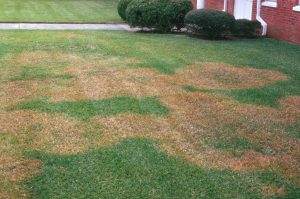
Palmetto St. Augustine is widely known for it’s superior cold & drought tolerance. With a slightly finer texture than other St. Augustine types, Palmetto St.
Augustine will grow in a variety of soil types and climate conditions. Radiating an emerald color, Palmetto can be your choice for home or commercial lawns. Exhibiting both drought and heat tolerance, it is most commonly known as the most cold and shade tolerant of the St. Augustine grasses.
The downside of this grass is it is highly susceptible to Brown Patch and during the winter any ounce of extra water will spurn an outbreak of this fungus. Recovery of this grass is slow and it will not recover often times until late spring. Thus re-sodding is common in this type of grass.
Palmetto St. Augustine is the most sold patented turfgrass in the world with more than 1 Billion square feet sold – My assumption of this is because of how often homeowners have to re-sod their lawn because of how poor this grass does vs fungus. Its a highly profitable grass for sod farms to keep selling because there will be areas of the lawn each year that will need to be re-sodded. Incentives lead the sod farms to push grasses that may not be in your best interest.
5. Bitter-Blue (Not Preferred)
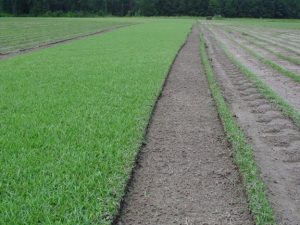
Bitterblue is another variation of St. Augustine grass. These grasses grow best in warm weather, making them a favorite of Floridians who enjoy the tropical and subtropical region. Originially engineered in the 1930s, the Bitterblue grass is sometimes confused with another variation, Floratam.
But unlike Floratam, it can tolerate much more shade and cold weather. It does have some problems with fungal diseases, though, as well as chinch bugs, grubs, mole crickets, sod webworms, and cutworms, so this is important to consider when deciding on Bitterblue grass.
Bitterblue differs in appearance from other types of St. Augustine grass, which only helps with its appeal. While many other St. Augustine grass types have a thick, coarse appearance when viewed up close, Bitterblue is finer, solid turf. It also takes on a darker blue green hue than most other grasses in its group, hence the name.
Compared to other St. Augustine grasses, Bitterblue is a slow grower, and ideally it should be watered weekly. Despite this, it is capable of surviving through drought conditions. It can be cut at a height of three to four inches, and mowing frequency should be adjusted to the amount of growth, never removing more than one third of the height of the leaf blade while mowing.
This type of grass needs special attention to watering; which is we would recommend being a full time resident if you are to have this grass.
